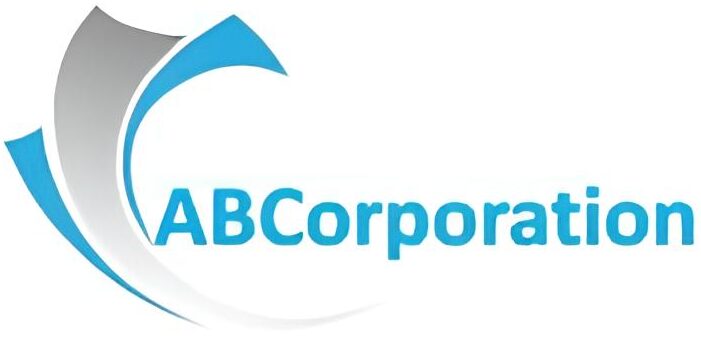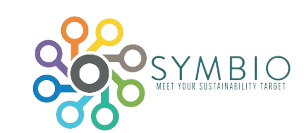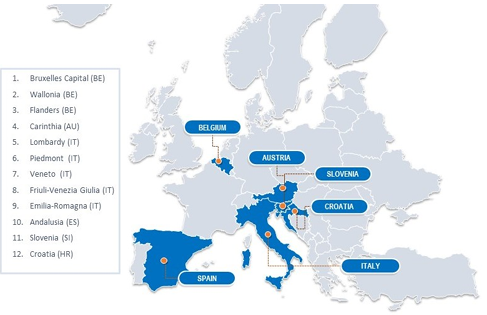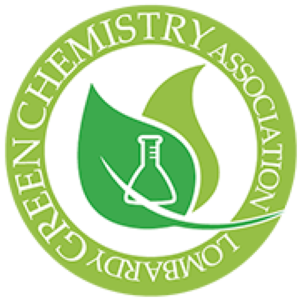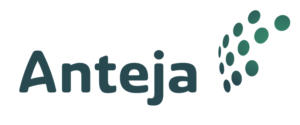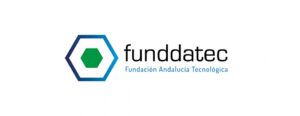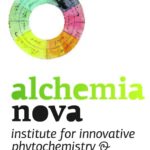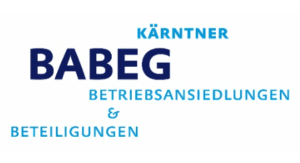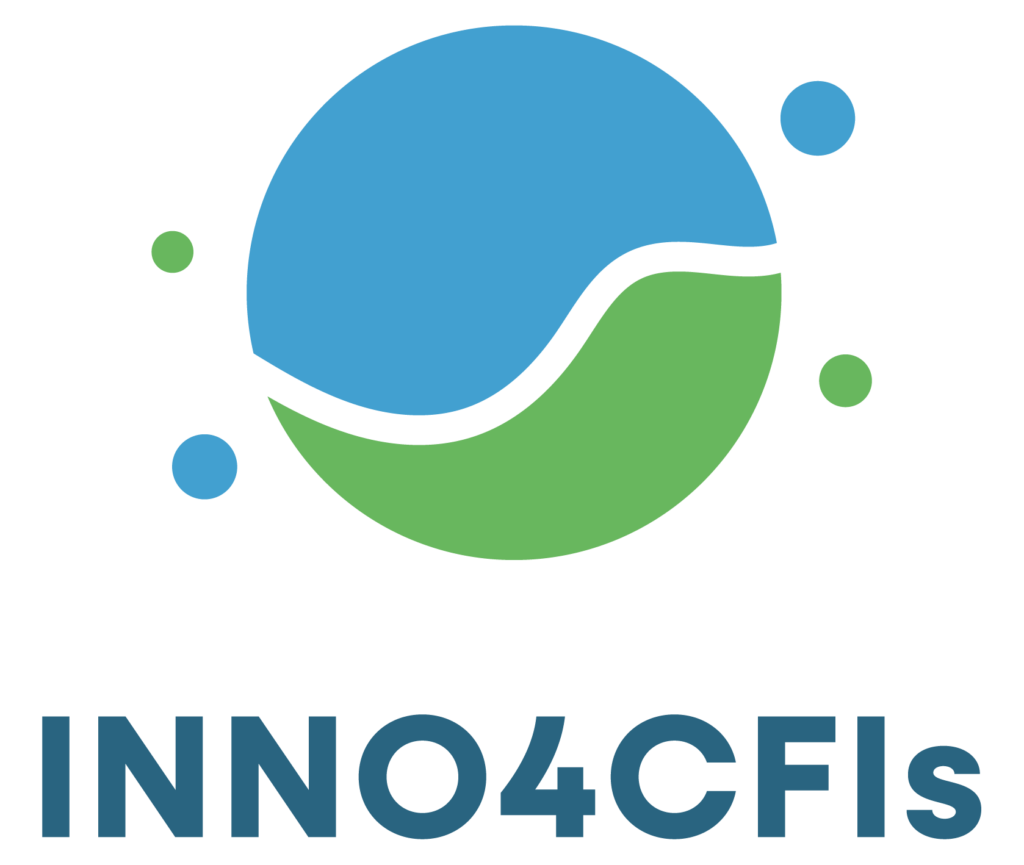
Funding program: : I3-2021-INV1-GREEN
Start date: 1.09.2023
Closing date: 31.08.2026
Duration of the project: 36 months
Grant agreement: 101115156
INNO4CFIs – Nature-Based Business Model and Emerging Innovations to Enhance Carbon Farming Initiatives (CFIs) while Preserving Biodiversity, Water Security, and Soil Health
Website
AB Corporation is the partner for Business Models, and Communications & Dissemination of the INNO4CFIs project.
INNO4CFIs is promoting innovation for carbon farming with a positive impact on the environment, climate and local communities in 13 European regions. INNO4CFIs – “Nature-Based Business Model and Emerging Innovations to enhance Carbon Farming Initiatives (CFIs) while preserving Biodiversity, Water Security and Soil Health”,co-funded by the European Regional Development Fund I3 instrument.
The aim of INNO4CFIs is to promote carbon farming and nature-based business models, technology and innovation to increase CO2 uptake while nurturing vital environmental benefits like freshwater production, soil restoration, and biodiversity enhancement. With a focus on carbon farming initiatives and reforestation, the objective is to develop a Carbon Technology Platform, redefine carbon farming and create a highly replicable and scalable business model in the Carbon Farming sector.
AB Corporation Services for the INNO4CFIs project
Coordinator

Partners
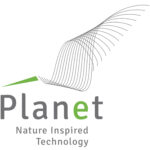
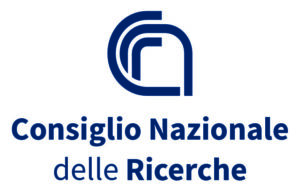

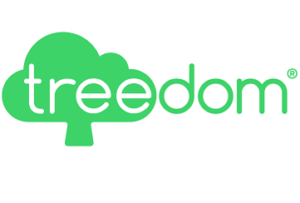

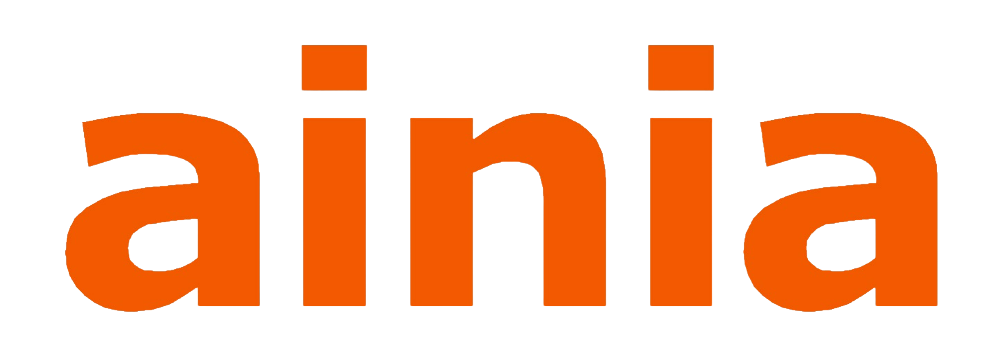
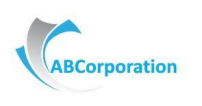
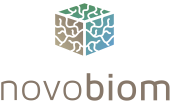

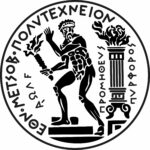




Funding program: HORIZON-CL4-2023-HUMAN-01
Start date: 01.11.2023
Closing date: 31.10.2025
Duration of the project: 24 months
Grant agreement: 101135855
AFCOS – AGILE AND FLEXIBLE CONSTRUCTION MATERIALS STANDARDIZATION FOR BOOSTING THE TWIN TRANSITION
Website
AB Corporation is the partner for Communications and Dissemination of the AFCOS project.
The main goal of the project is to support the standardization process of new building materials in support of the twin transition. The project combines the expertise of 7 partners from 4 European countries (Bulgaria, Romania, Italy and Belgium), including a higher education institution, standardization institutes, an engineering company, organizations supporting the environment and sustainable development, representatives of the consulting business.
The partners will work in enhanced collaboration with various stakeholders – institutions and public organizations from the construction industry and business to conduct a thorough research of the regulatory framework and prepare road maps to support the standardization of new building materials. The project envisages the preparation and testing of a training programme for upgrading the necessary knowledge and skills in the field of standardization of building materials. In addition, communication activities are planned, actively involving all stakeholders in the construction process.
AB Corporation Services for the AFCOS project
Coordinator

Partners



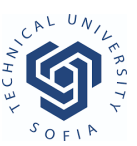



Associated Partners



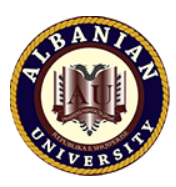


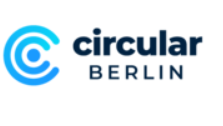
Effective Reporting in Horizon Europe
Your first periodic report (RP1 report) for the European Commission (EC) may be due soon now that your Horizon Europe project is operational. These reports are required by law to be sent to the EC.

They make it possible for the EC Project Advisors and Financial Officers assigned to your project to: (1) confirm your work progress in relation to the project description found in Annex 1 of the Grant Agreement (GA), also known as the “Description of the Action”; and (2) determine whether the costs that the project partners have claimed are eligible. Although this can seem daunting, you shouldn’t be concerned!
How frequently should one report?
The length of your project will define how many reporting periods you need to submit, which was decided upon during the grant preparation stage. There are usually two reporting periods for projects that last 24 to 36 months, three for projects that last 42 to 48 months, and four for projects that last 60 months.

When reporting goes from continuous to periodic, what are the benefits?
To make it easier to monitor your project and ensure that it is carried out in accordance with EC regulations, the Continuous Reporting module of the EU Funding & Tenders Portal was opened at the beginning of the project. This module becomes a component of your report (component A) after Periodic Reporting is turned on at the conclusion of a reporting period. To be ready for the periodic report(s), we advise filling out at least part of the forms in the Continuous Reporting module as you proceed.
Periodic reports from Horizon Europe and H2020: are they identical?
The reporting procedure has remained essentially the same, based on our observations from the first two recently submitted RP1 reports. For instance, the RP1 report for the majority of projects is due in 12 or 18 months, and your consortium has 60 days from the conclusion of each period to submit the corresponding periodic report. And there are still only two components to the reports:
- Part A: Project-specific web forms available through the EU Funding & Tenders Portal. This section is based on data entered into the financial statements—which are cost claims that each project partner must submit through the portal—in the Continuous Reporting and Periodic Reporting modules. (Note that while doctoral networks and lump sum projects are exempt from this since they are subject to different regulations, this applies to research and innovation actions, innovation actions, and coordination and support actions.)
- Part B: The Technical Report, which needs to be posted into the portal as a PDF file and describes the work done during the reporting period.
However, Part A, the online forms on the site, has significant modifications and new criteria (from 13 forms in H2020 to 17 forms in Horizon Europe). These call for partners to log in and enter data in addition to requiring extra information. Considering the amount of information needed, it is best to begin filling these out as soon as a reporting period ends, if not before. The information that needs to be entered into each of these online forms and submitted to the EC is outlined below.
Part A: facts and figures
The Periodic Reporting module only shows up on the EU portal following the conclusion of the reporting period, whereas the Continuous Reporting module is available for use for the whole life of a project (and beyond). The primary practical distinction between the two modules is that financial statements and the technical report can only be contributed to the Periodic Reporting module. All other information included in the Continuous Reporting module moves automatically to the Periodic Reporting module. The coordinator can use the latter to submit the periodic report after they have all the necessary data. You just need to click on the corresponding piece in the interactive infographic below to complete Part A.
Scroll the slides below to see more instructions:






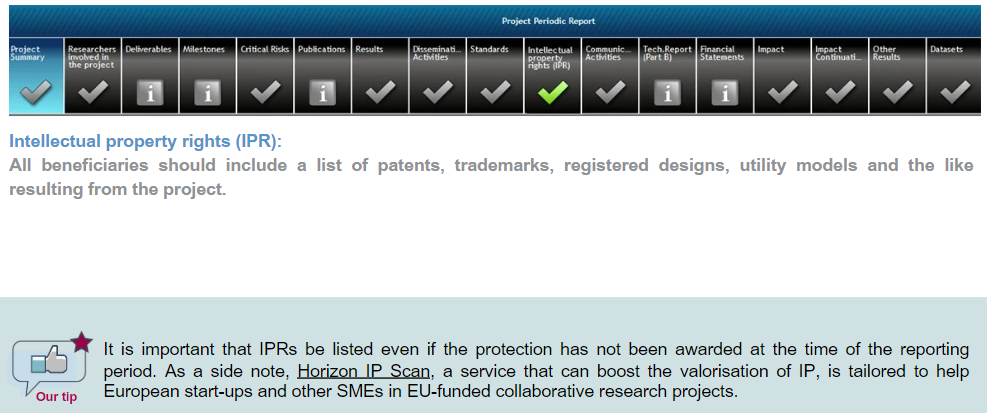
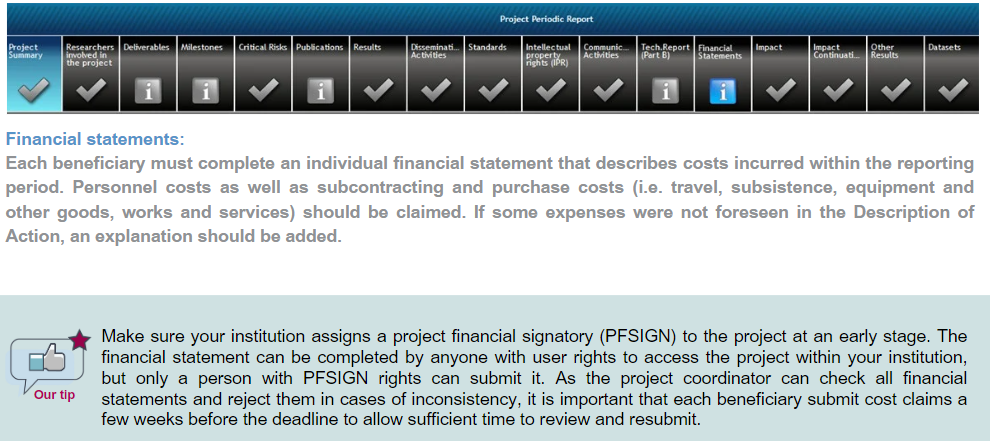
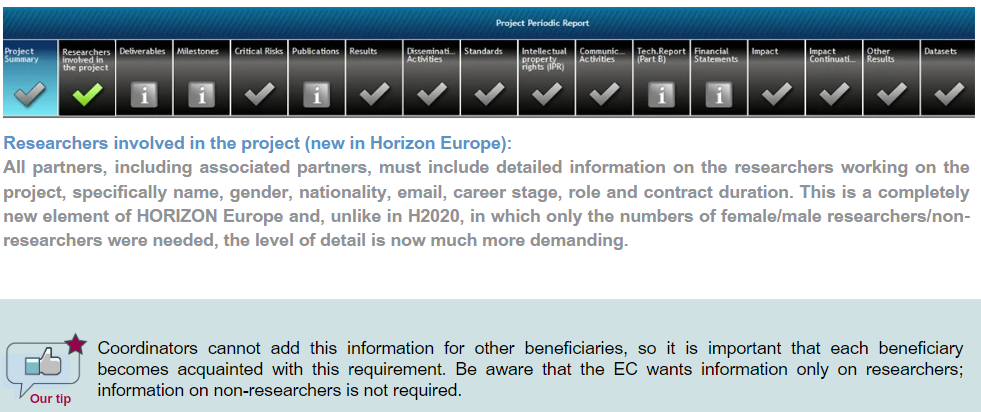
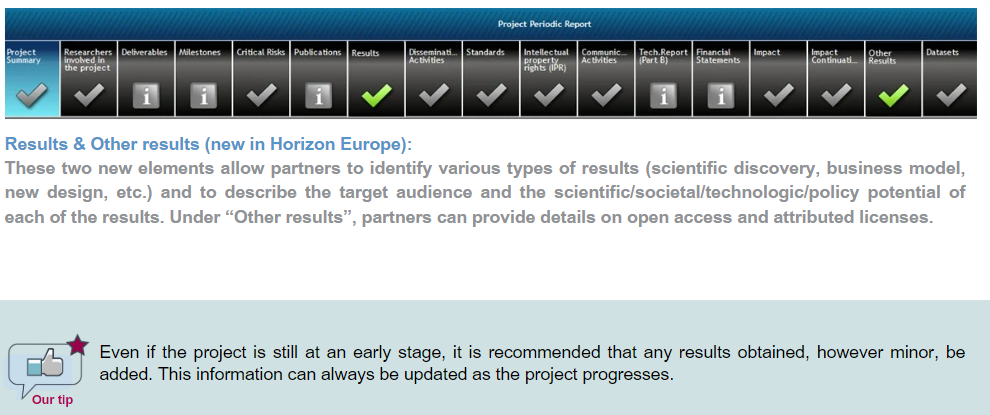
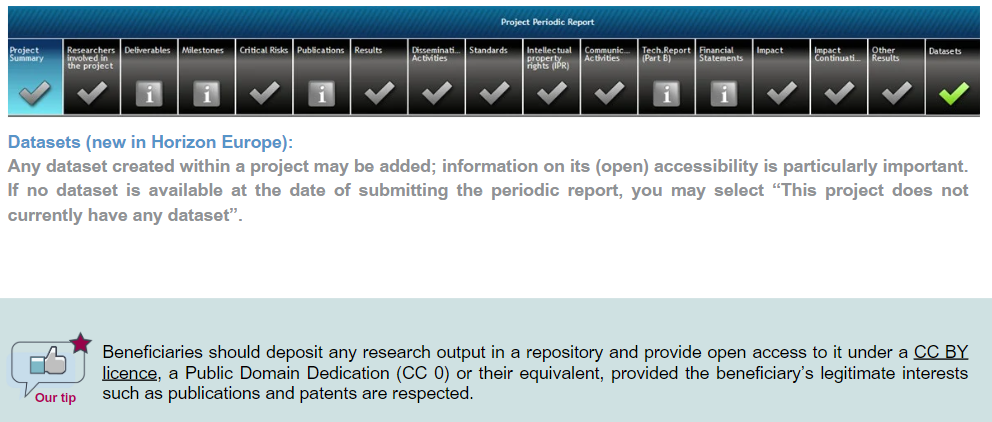
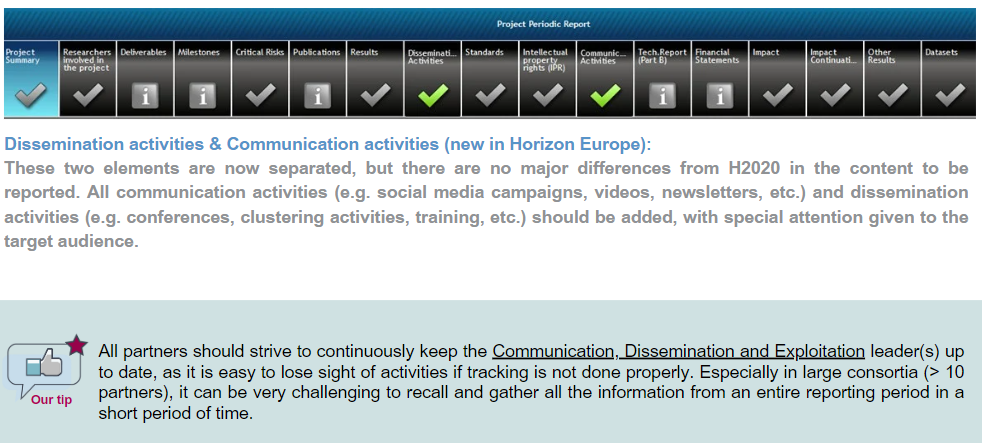
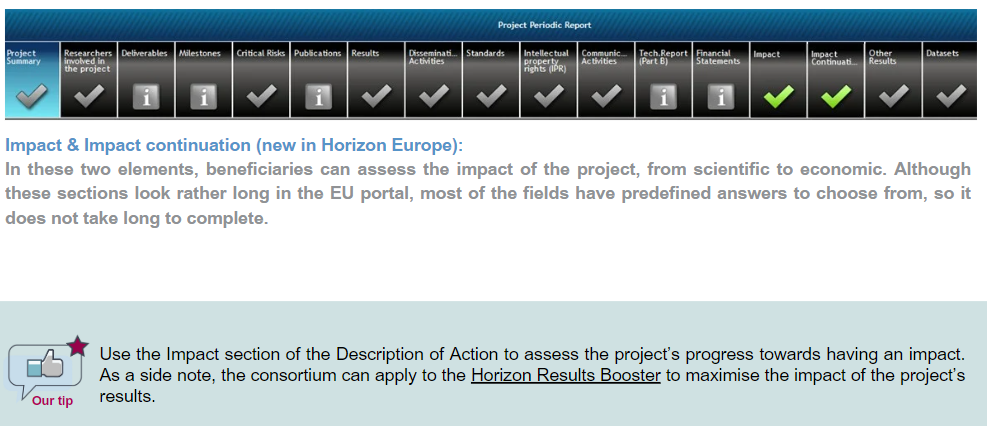
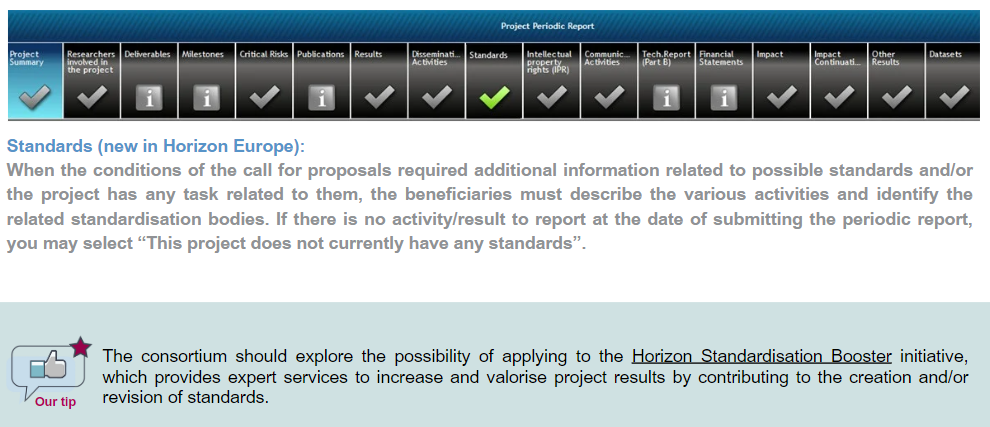
Part B: description of the work progress
The narrative account of the work completed during the reporting period is found in Part B. You can get the template for a technical report from the Periodic Reporting section. It is possible to re-upload it as a PDF after compilation. A summary of the tasks completed for each work package during the reporting period should make up the main body. Although there should be a lot of detail, the report nevertheless needs to be legible and succinct.
While it is not necessary to repeat information that is already in Part A, it is advisable to make references to certain parts of Part A. A special focus should be placed on any deviations from the Description of Action in the EC Grant Agreement, together with any potential repercussions and any corrective actions. Delays and important goals, deliverables, or milestones that haven’t been reached entirely should also be explained.
Regarding open access and the plan for results exploitation and dissemination, the consortium can still give an update in Horizon Europe (these are two optional chapters in the part B template). A rationale must be included in the “Use of resources” chapter for any budgetary deviations, transfers of cost categories, and revisions to earlier financial statements.
Tips from AB Corporation
Since all project partners' contributions are usually compiled in the technical report, the template should be created and distributed as soon as possible to allow all work package leaders to contribute. The input can be gathered prior to the Periodic Reporting module opening, as you are aware of the scheduling of the periodic reports. Our experience indicates that between the project coordinator and the working teams, iterations are frequently required. Supplementary information in the form of images and annexes is more than welcome. To guarantee a high caliber of given content, an internal review procedure and multiple quality checks are advised.
Review meetings of the European Commission
The Project Adviser may invite the consortium to a review meeting with two to four external experts to assess the status of your project. The work package leaders report the scientific and technical advancements within their respective work packages during this meeting, while the coordinator usually summarizes the overall project accomplishments and status. Before the meeting, the experts should study the provided deliverables and the drafted periodic report. Then, they should ask questions and offer immediate input.
The approval of the periodic report is a requirement for receiving funds, thus the coordinator may still receive a “suspension of the payment” letter in spite of the review meeting. You need not be alarmed, though, as this simply indicates that more information is required. After this data is accepted, the following payment will be made.
Tips from AB Corporation
It is advisable to schedule this meeting for sometime between the conclusion of a reporting period and the periodic report submission date. The technical report does not have to be submitted in its complete form—an advanced version will do—and your consortium is free to revise it following the review meeting in order to incorporate the evaluators' views before the deadline. This can expedite the periodic report's vetting process and give the consortium important information prior to the final submission. Further information may yet be requested by the EC, particularly on the financial statements.
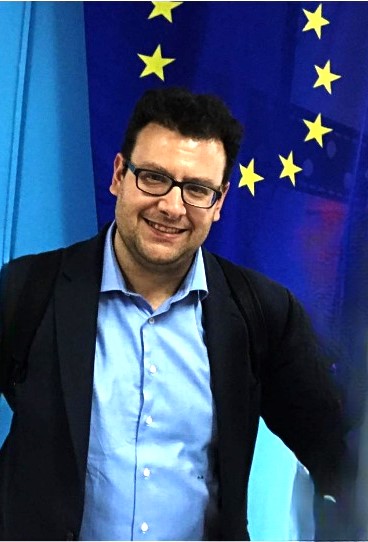
AB Corporation can support you
Numerous project consortia have benefited from the effective support of our team at AB Corporation in producing their periodic reports. As an advocate for numerous EU-funded initiatives, we offer direction and assistance with planning, monitoring, and evaluation. Please get in touch with one of our experts if you would like more information about our project management assistance.
Contact our expert
Communication, Dissemination and Exploitation: Reporting in Horizon Europe
Reports are composed of two parts: Part B is the Technical Report that details the work completed during the reporting period and needs to be posted into the EU Funding & Tenders site as a PDF file. Part A is the project-specific online forms in the site. Reporting your communication, dissemination, and exploitation activities is subject to the same rules. It is also necessary for you to finish Part A and Part B here.
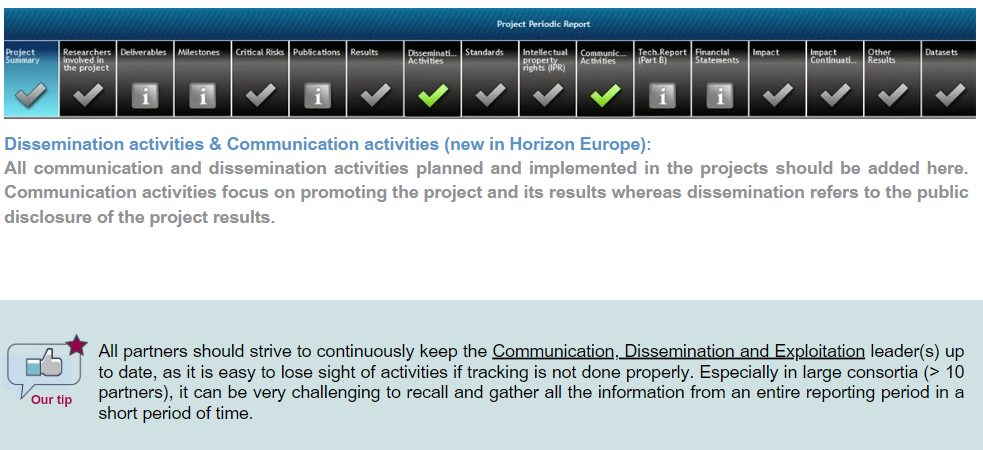
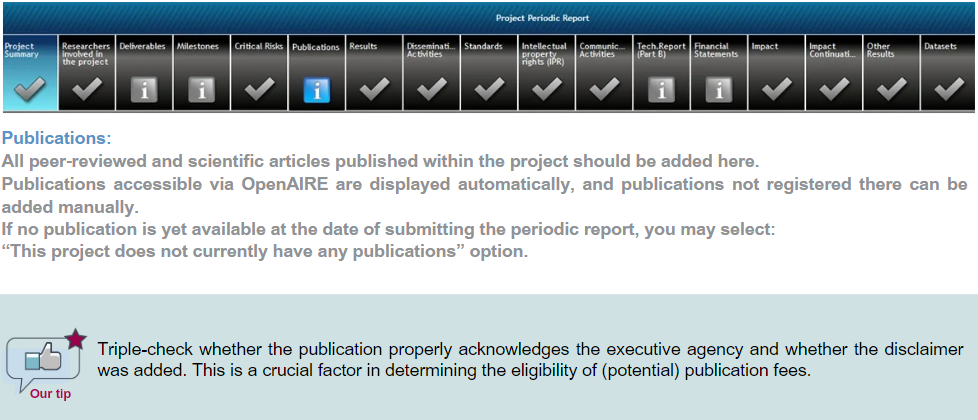


Communication and dissemination activities
The amount of information required for this element has increased in Horizon Europe (HEU) projects. Once reported simultaneously, the two parts are now reported separately. With particular emphasis to the target audience, all communication and distribution efforts (such as conferences, clustering events, trainings, and social media campaigns) should be included.
The name and kind of the activity, its goal and result, the number of people it reached from various target groups (such as research communities, innovators, industry, authorities, or citizens), and the information about the channel must all be included next to this information. You should be able to stay on track if you take into account the items that are already included in your Plan for Dissemination and Exploitation, including the Communication activities (PDEC) that you submitted as a deliverable.
Publications
All peer-reviewed publications resulting from research programs that the EU funds must be fully reported. The European Union works to maintain the values of open science by making sure that all peer-reviewed papers are reported. This goes beyond simple bureaucratic procedure; it also has to do with accountability, transparency, and maximizing the impact of your research. You are serving the larger scientific community as well as your commitments by making sure that this rule is followed.
A significant factor that determines whether reported publications are eligible is the accurate acknowledgment of financing and compliance with Open Access guidelines. Thus, before submitting a paper for publication, make sure you are fully aware of the prerequisites. Publications that are available through OpenAIRE are frequently shown automatically in the portal.
However, keep in mind that these can also include papers or public deliverables written by project participants that are not products of the work delivered for the project. The Persistent Identifier (PID) of the publication, repository, kind of publication, title, authors, ISSN/eISSN, publisher, and open access are among the details that need to be monitored and recorded in the portal.
Datasets
Does result sharing go beyond peer-reviewed publications? Yes, let’s discuss datasets, a brand-new area in Horizon Europe, which is another crucial component. The European Union requires that datasets produced during projects be documented alongside publications, placed in approved repositories, and adhere to the FAIR principles.
It is important to follow the concepts of findability, accessibility, interoperability, and reusability in this step, which goes beyond simple administration. Additionally, by putting datasets in repositories with open access, you guarantee that other members of the scientific community can access and use your research.
To help streamline the process, make sure you create a thorough Data Management Plan, which is a required deliverable for HEU projects. In this plan, you should specify which data is excluded from open sharing because of security requirements, confidentiality requirements, or other valid limitations.
Impact and Impact Continuation
Additionally, Impact and Impact continuation are new in Horizon Europe. Your project will have a wide range of impacts, from improving science and technology to addressing societal issues. Therefore, it is crucial to take into account the project’s Technology Readiness Level (TRL) and how it contributes to various Sustainable Development Goals (SDGs) when reporting on impact. Don’t forget to emphasize ways that citizens and/or end-user entities can continue to participate once the project is finished.
What should I write about the work progress in Part B?
An account of the work completed during the reporting period can be found in the Technical Report (Part B). A description of each work package’s activities during the reporting period, including an outreach activity, should make up the core body.
Tips from AB Corporation
• Consult your PDEC and the Description of Action (DoA) first. Elucidate the status of every accomplished or ongoing task, deliverable, and milestone listed in the DoA.
- Mention the objectives, the target audience, and key performance indicators (KPIs) for each activity listed in the PDEC, together with their target values. Analyze the results of the activities that were carried out while taking quantitative and qualitative analysis into account.
- Remember to maintain your online presence! Make sure your initiative has an active social media presence and a website in accordance with EU regulations. Incorporate analytics data, such as numerical indicators that illustrate the advancement of outreach objectives. Explain how you weight the findings against the starting targets specified in your PDEC to continuously monitor performance and assess these channels’ efficacy.
- Explain why any activities were not implemented exactly as anticipated in order to address any delays. Provide an explanation of your future plans for its implementation, including the steps you will take to accomplish tasks, reach milestones, and meet objectives.
- Emphasize the steps taken to guarantee the project outcomes are used for both commercial and non-commercial purposes when discussing exploitation activities. Contributions to standards, patent applications, licensing contracts, and other technology transfer formats may fall under this category.
- Don’t forget to discuss additional project effect factors like TRL, citizen engagement, and SDG contributions. You can give a thorough overview of the project’s wider social relevance, engagement of stakeholders, and progress toward broad applicability by evaluating and documenting these factors.
- If this isn’t the last reporting period, then summarise the plans for the remaining tasks and activities in brief, giving an indication of the project’s future course.
- Finally, but just as importantly, to make your report more effective, add figures and links where appropriate. Reader comprehension and interpretation of complicated information can be facilitated by the clear and succinct portrayal of the data that data visualisations can offer.
You may guarantee thorough coverage of your communication, dissemination, and exploitation activities in your Technical Report by include these components. This will show the EU that you are accountable, making progress, and have a strategic plan in place.


AB Corporation can support you
Numerous project consortia have benefited from the effective support of our team at AB Corporation in producing their periodic reports. As an advocate for numerous EU-funded initiatives, we offer direction and assistance with planning, monitoring, and evaluation. Please get in touch with one of our experts if you would like more information about our project management assistance.
Contact our expert
How to write a successful Horizon Europe proposal: Impact section
One of the most crucial elements of Horizon Europe’s evaluation criteria is impact. As a result, careful consideration and attention should be given to the impact presentation. We outline how to approach the Horizon Europe joint project’s “Impact” section in this post, which is the first in a series on this crucial subject. We will also provide our preliminary writing advice for this area in an effort to make the proposal more competitive.
We’ll start by taking a conceptual approach to the “Impact” section. After providing an overview of the formal guidelines from the European Commission about the composition of the “Impact” section, we will conclude with some writing advice of our own.
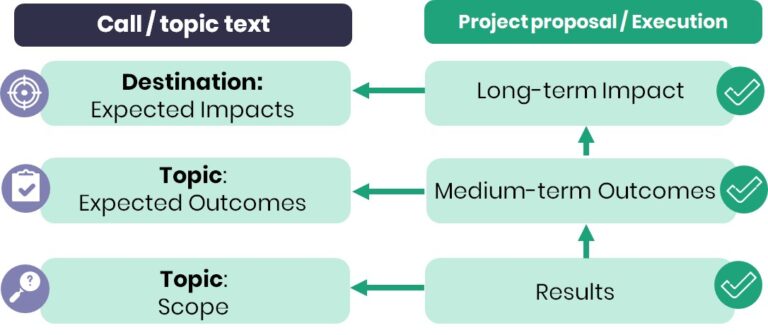
Impact of Horizon Europe: the conceptual elements
Any research should, of course, have an impact. However, the desire to carry out the recommended research and development project drives the typical impact that many end up citing in their submission. As a direct result, many people define the impact of a project as the expected short-term outcomes. This is the first typical mistake and typically the start of the issue. In reality, a Horizon Europe project proposal’s expectations for impact go much beyond just achieving these outcomes. Let’s examine this matter more closely.
Impact extends beyond outcomes. Determine the project's value.
Even if a research project’s outcomes are crucial, they do not always indicate the project’s impact. Not only will this be a very cursory presentation that does not fully explain the impact of the project, but it will also not meet the standards set by the European Commission as they are expressed in Horizon Europe if the information in the “Impact” section is limited to the “results” obtained.
As a result, many other factors should be taken into account in the context of Impact in addition to the outcomes, some of which are anticipated to go beyond the project’s scope and duration. Thus, the appropriate formula that ultimately needs to be

AB Corporation can support you
Our track record and expertise in EU proposals are your secret weapons to achieving your goals. Numerous project consortia have benefited from the effective support of our team at AB Corporation in writing a full proposal, reviewed a re-submission, or writing certain parts . As an advocate for numerous EU-funded initiatives, we offer direction and assistance with planning, monitoring, and evaluation. Please get in touch with one of our experts if you would like more information about our project management assistance.
Contact our expert
Impact > Outcomes of the Project
Having established this, the following queries are raised: What steps do we take next? How can we close the gap that exists after the project’s outcomes?
Unlike earlier framework programs, Horizon Europe has elements and requirements in the Impact section that allow us to address these problems. But before we get into the specifics that will enable us to produce an accurate “Impact” section for Horizon Europe, we provide you with this crucial tip to help you along the way:
Substitute “value” for the term “impact.” Then, when writing the “Impact” section, consider the following queries: “What is the project’s value?” What level of significance and importance are the anticipated benefits of your project? To what extent are they prevalent?
Horizon Europe looks for innovative and ground-breaking research initiatives that really address global issues. They ought to have significant value because of this (=impact). In what other setting could researchers enthrall reviewers with the remarkable applications of their work? It has to be via the “Impact” area, surely! If properly completed, this part can greatly increase the project’s chances of getting funded.
It is the best chance to convey the project’s value and, consequently, its enormous influence in order to “sell” it. Ignoring it would be extremely detrimental to the application process overall.
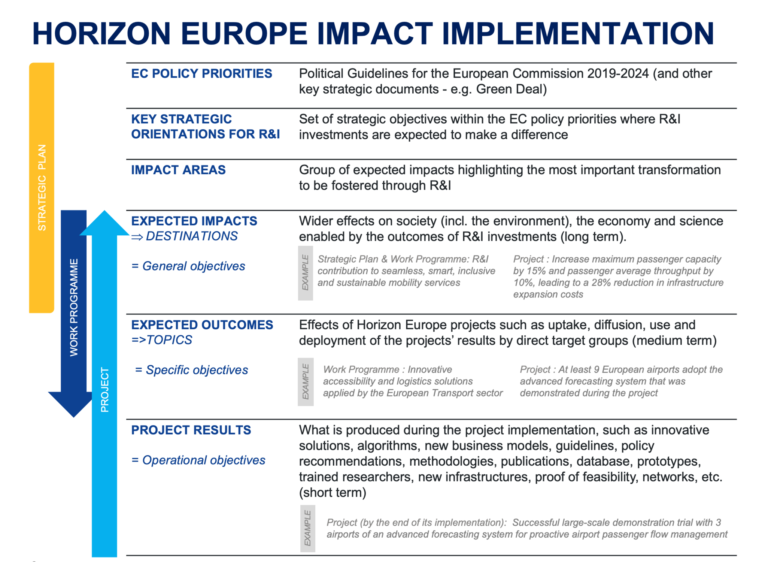
Consider the following when evaluating the project's impact
• What will happen once we meet our goal and get results?
• What will occur after the project is finished?
• What further actions outside the project’s scope might be taken next?
• What “heritage” will the project have?
The Horizon Europe impact-driven strategy
In this regard, an effect-driven strategy for securing and disseminating impact has been created in order to optimize the impact of Horizon Europe initiatives. These nine core narratives correspond to the three core Impact Pathways. The European Commission wants to better inform lawmakers, budget authorities, and the public about the effects of EU spending for research and innovation (R&I). To that end, it is introducing an impact-driven approach. This strategy is in line with the goal of expanding the range of effects of EU financing for innovation and research.

Key Impact Pathways (KIPs)
- Scientific Impact: (1) Creating high-quality new knowledge; (2) Strengthening human capital in research and innovation; (3) Fostering diffusion of knowledge and Open source.
- Societal Impact: (4) Addressing EU policy priorities and global challenges through research and innovation; (5) Delivering benefits and impact through research and innovation missions; (6) Strengthening the uptake of research and innovation in society; and
- Economic / Technological Impact: (7) Generating innovation-based growth; (8) Creating more and better jobs; and (9) Leveraging investments in research and innovation.
Impact Dimensions
After working with thousands of applicants on their proposals for different framework programs, we are able to recognize a common error that occurs when submissions target too few impact dimensions (usually the ones that are relatively “easy” to obtain data for and locate supporting evidence for).
The second typical mistake made when writing the “Impact” section is this one. Because of this, many applicants have a tendency to overlook numerous other factors that are just as significant. In this situation, it is crucial to thoroughly examine every facet of the project, evaluate it critically, and identify any more dimensions that should be mentioned.
Proposals ought to make an effort to address each of the aforementioned Key Impact Pathways and their various narratives. Given that, it is best to avoid the alternative situation of trying to “cover all” of the aforementioned channels while making incredibly shaky or ambiguous connections to the project that is being offered.
The ‘Impact’ section in Horizon Europe proposals
The impact section in the Horizon Europe proposals consists of 3 sub-sections:
2.1 Project’s pathways towards impact
2.2 Measures to maximise impact
2.3 Summary canvas
2.1 Project’s pathways towards impact
This could be the most significant portion outlining the impact of the project. It is highly advised that you thoroughly review the requirements listed in this part, comprehend the evaluation standards in that context, and fulfill all obligations.
The project’s three components comprise its pathways towards impact:
1. Results: These would be the project’s instantaneous, short-term outputs. Expertise, creative ideas, algorithms, viability evidence, novel business models, policy suggestions, guidelines, demonstrators, prototypes, databases, skilled researchers, new infrastructures, networks, etc. are a few examples. The project’s outcomes must match both its goals and the parameters specified in the topic description.
2. Outcomes: These are the anticipated mid-term outcomes of projects funded under a specific subject. A project’s outputs ought to support these goals, which are especially promoted by the methods for distribution, communication, and exploitation. The project’s results ought to line up exactly with the goals specified in the topic description.
3. Impacts – These are longer-term, broader consequences on science, the economy, and society (including the environment), made possible by the results of R&I investments. They usually take place after the project is finished. Impacts should relate to the project’s particular contribution to the intended impacts of the Work Programme as outlined in the Destination, which is the area of focus for the selected topic.

The proposal language should describe in section 2.1 how the project’s concept and work plan will inform all three parts. Additionally, as shown in the following diagram, the proposal should show how each of these components would contribute to the pertinent predicted impact or impacts:

It is important as the applicant to persuade the reviewers who are perusing the project proposal that your project can practically fulfill each of these requirements when it is carried out, on all three levels:
1. The project’s outcomes ought to line up with the specifications outlined in the topic’s scope.
2. These should then result in the medium-term outcomes, which should match the goals specified in the topic description.
3. And from these should follow the long-term effect, which ought to line up with the anticipated impacts specified in the pertinent destination.
2.2 Measures to maximise impact
A strong plan that will allow the project to optimize its impact is a necessary for any Horizon Europe project, as the initiative’s impact is of the utmost importance. To achieve the maximum impact potential, a plan like this should incorporate three steps: exploitation, communication, and dissemination. Within six months of the signature date, it must be delivered as a deliverable and updated on a regular basis to reflect the project’s advancement.
2.3 Summary canvas
Subsection 2.3’s objective is to provide the reviewers with an efficient synopsis of the messages included in the “Impact” section. This is a tried-and-true method of providing the reviewer with the most important messages in an extremely effective way. This section’s table structure is specified in the Horizon Europe proposal template, and we strongly advise that you adhere to it in its entirety.
Tips from AB Corporation
- Make sure you fully familiarize yourself with the desired outcomes and wider impacts of the Destination and Work Program, as they are directly related to the topic on which your project is focused. After you’ve done so, you must provide a thorough explanation of how the results of your project will specifically contribute to these outcomes and impacts in the form of a narrative.
- Steer clear of describing shaky connections to the subject of study in general, since the possible reviewer will verify whether or not what you offer is genuinely reliable. The European Commission is seeking a specific contribution from your project to the expected outcomes related to the theme and the broader expected outcomes of the Work Programme and Destination.
- Consider starting with sub-section 2.3, “Summary canvas,” before creating the “Impact” section itself. Identifying the key points you want to make clear in this area will help you later on when you need to develop them into a strong, cohesive story, as stated in sub-section 2.1 (“project’s pathways towards impact”).
- Involving a range of stakeholders in the co-creation of your project plan from the start of proposal writing is a suggested method to guarantee strong paths to impact. There is no doubt that this strategy will provide broad advantages, much as the ones the European Commission is seeking.
- In order to receive a good score in this part, you must include baselines, benchmarks, and assumptions that illustrate our current situation as well as our projected state for the project’s completion and beyond. This can include, but is not limited to, anticipated income from new technologies, the amount of patient populations that a new therapy would impact, the number of new jobs generated by a successful project, the increase in the user base of emerging technologies, and so forth.
- It is also expected of you to identify any barriers that may arise from variables outside the purview and time frame of your project and which could affect the achievement of the desired outcomes and impacts.These could include, for instance, targeted markets for the regulatory environment, additional research and innovation projects both inside and outside of Horizon Europe, etc. After that, you will have to offer recommendations for potential ways to mitigate these barriers.
- Incorporate specific steps to maximize the impact through dissemination, exploitation, and communication activities. The prospective reviewer will assess the suggested metrics’ quality, applicability, and concreteness both during and after the project. Determine who your target audiences are for various measures as well.

AB Corporation can support you
Our track record and expertise in EU proposals are your secret weapons to achieving your goals. Numerous project consortia have benefited from the effective support of our team at AB Corporation in writing a full proposal, reviewed a re-submission, or writing certain parts . As an advocate for numerous EU-funded initiatives, we offer direction and assistance with planning, monitoring, and evaluation. Please get in touch with one of our experts if you would like more information about our project management assistance.
